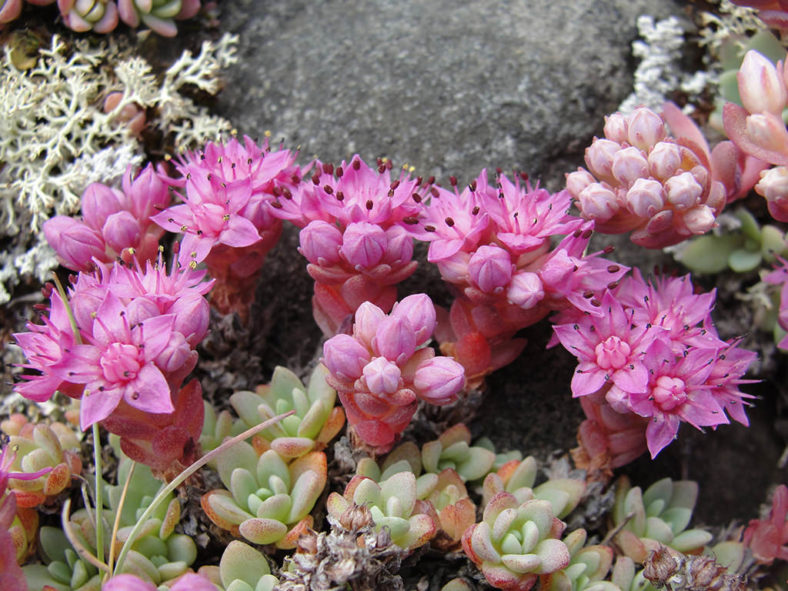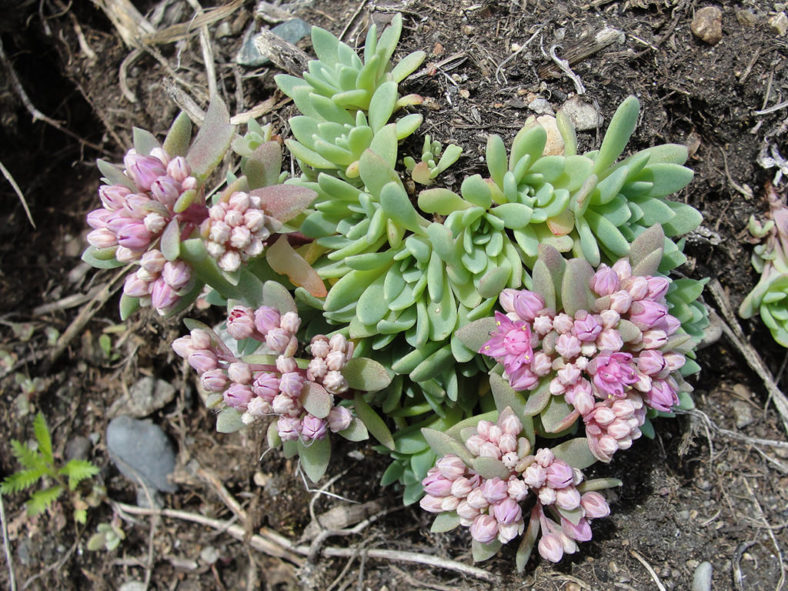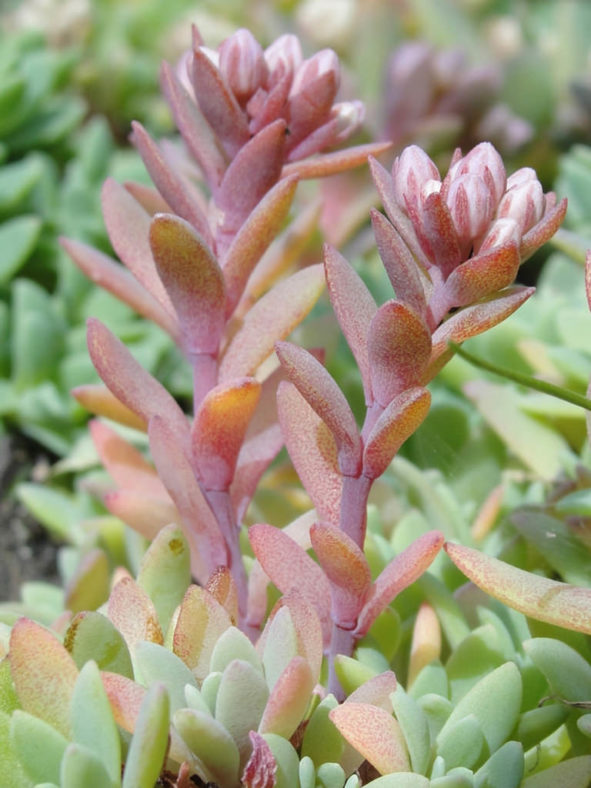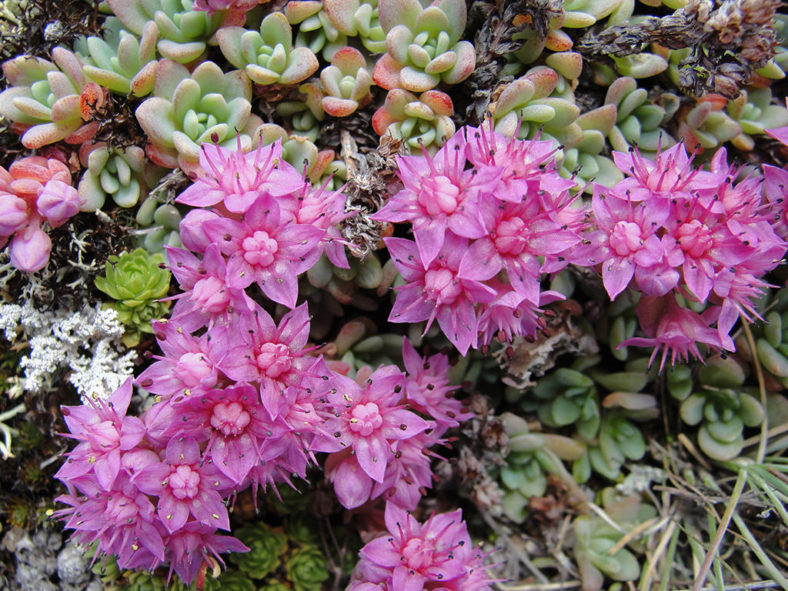Scientific Name
Hylotelephium cyaneum (Rudolph) H.Ohba
Common Name(s)
Azure Stonecrop
Synonym(s)
Sedum cyaneum
Scientific Classification
Family: Crassulaceae
Subfamily: Sempervivoideae
Tribe: Telephieae
Genus: Hylotelephium
Etymology
The specific epithet "cyaneum (sy-AN-ee-um)" is the neuter form of the Latine adjective "cyaneus," meaning "deep or dark blue (color)," and refers to the color of the foliage.
Origin
Hylotelephium cyaneum is native to Russia (East Siberia and Sakhalin) and northern Japan.
Description
Hylotelephium cyaneum, formerly known as Sedum cyaneum, is a mat-forming succulent with short stems and fleshy, smooth, grey-green leaves arranged in rosettes. The leaves are spatula-shaped or lance-shaped, with a pointed end at the base, and can grow up to 0.5 inches (1.3 cm) long.
The flowers are star-shaped, reddish-purple with blackish anthers. They appear in terminal clusters on leafy, often reddish stalks in late summer and early fall. The flower stalks can grow up to 3.2 inches (8 cm) long.

How to Grow and Care for Hylotelephium cyaneum
Light: This succulent prefers full sun. It tolerates light to partial shade in hot summer climates but will produce weak, floppy growth when grown in too much shade. Plant your H. cyaneum in an area of your garden that gets 6 hours of sunlight daily.
Soil: H. cyaneum does not need rich soil, but it does need excellent drainage. Choose a commercial potting mix for succulents, or make one yourself.
Hardiness: This plant has a tolerance to heat and drought and is cold-hardy, making it a popular outdoor succulent. H. cyaneum can withstand temperatures as low as -30 to 30 °F (-34.4 to -1.1 °C), USDA hardiness zones 4a to 9b.
Watering: The best way to water H. cyaneum is to use the "soak and dry" method. Get the soil completely wet, and then wait until it is dry before watering again.
Fertilizing: Feed annually with a balanced fertilizer. According to the package directions, apply the fertilizer to the soil in spring as new growth appears.
Repotting: Plants in containers require little more care than those in gardens. Repot your H. cyaneum when it outgrows its current pot by moving it to a larger pot to hold the plant better. Spring is the best time to repot this plant. Make sure the soil is dry before you begin the repotting process.
Propagation: This succulent can be grown from seeds, division, or stem cuttings. Sow seeds in spring. Dividing your H. cyaneum is easy and can be carried out at almost any time in the growing season, though it is probably best done in spring or early summer. Propagate by stem cuttings in summer.
Learn more at How to Grow and Care for Hylotelephium.
Toxicity of Hylotelephium cyaneum
H. cyaneum can be mildly toxic to humans and animals when ingested.
Links
- Back to genus Hylotelephium
- Succupedia: Browse succulents by Scientific Name, Common Name, Genus, Family, USDA Hardiness Zone, Origin, or cacti by Genus
Photo Gallery
Click on a photo to see a larger version.


